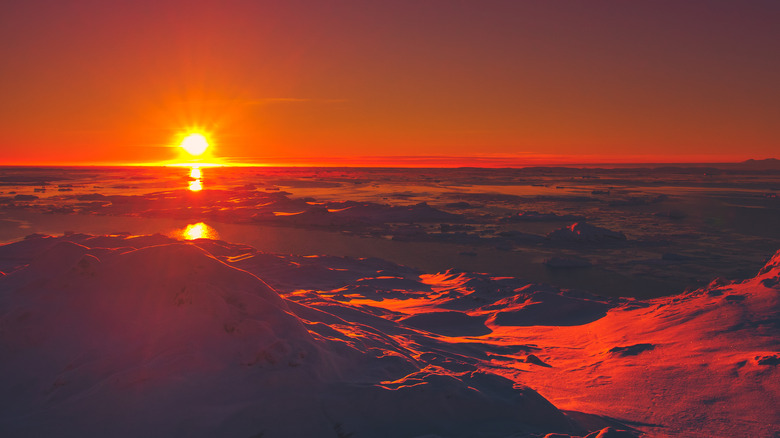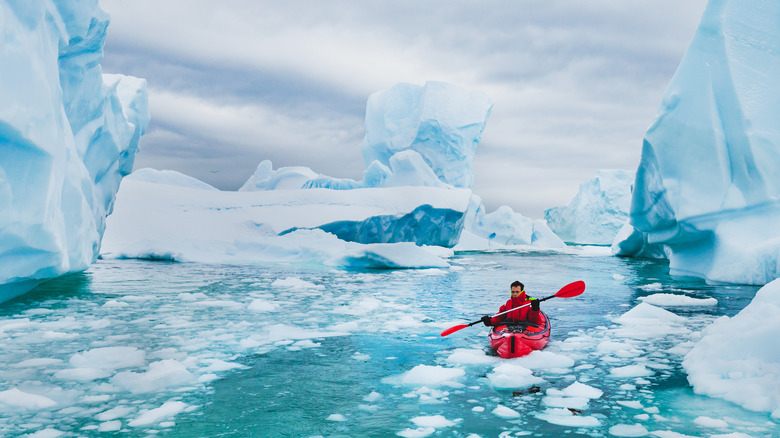The Natural Phenomenon Of Blood Falls In Antarctica Explained
Antarctica is a fascinating stretch of frozen space where barren land is plentiful and mysteries abound. One of its truly magnificent, if not a bit spooky, wonders is a place known to the world as Blood Falls. Atlas Obscura notes that Blood Falls is a five-story high waterfall slowly gushing a crimson-hued tide. The massive waterfall, which continues to spew liquid the color of rust, makes the tongue of the Taylor Glacier appear as if it is suffering from an open wound.
National Geographic reports that Blood Falls stumped scientists for many years. The most popular theory for the cause of the eerily tainted liquid was red algae. This was a reasonable conclusion to draw, considering the fact that tainted algae have caused the snow-covered valleys of this arctic landscape to take on a blood-like appearance in other locations in recent years (via Science Alert). However, a team of researchers led by noted author Jessica Badgely and glaciologist Erin Pettit (via Science Daily) soon discovered that the Blood Falls were actually linked to an underwater time capsule that was millions of years in the making.
Blood Falls have a 2-million-year-old reason to thank for its hue
When a team of explorers, experts, and researchers led by the University of Alaska Fairbanks and Colorado College (via IFLS) set out to uncover the source of the crimson red river, their first thought was algae. However, the truth proves that fact can be stranger than fiction. Using sophisticated radar techniques and underwater imagery, scientists learned that the true source of this natural phenomenon was a 2-million-year-old underwater time capsule.
Atlas Obscura reports that this unique layer of ice was effectively trapped in an iron-rich section of the lake for millions of years. Inside the frozen arctic layers, an ancient community of microbes evolved in an environment that was completely separate from the rest of the world. The liquid's hue was the result of high iron and salinity levels. The blood-colored liquid sprang out through the gaping cracks of a fissure.
More fascinating still is that this new discovery proves that life can exist even in extremely low temperatures and under conditions previously believed to be uninhabitable. Does this open up the possibility for life in space? Only time will tell.

